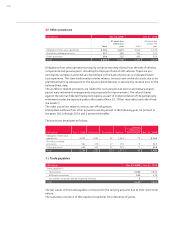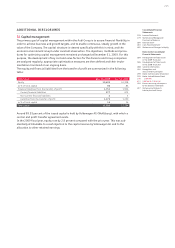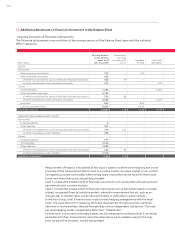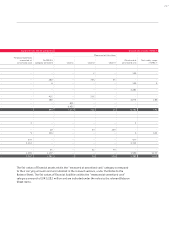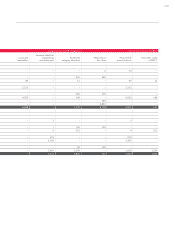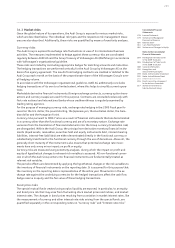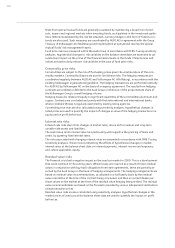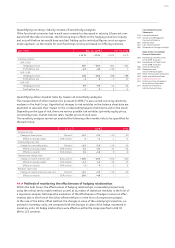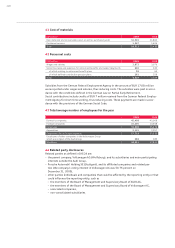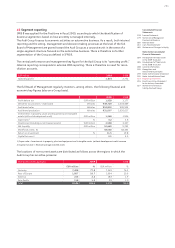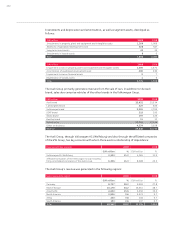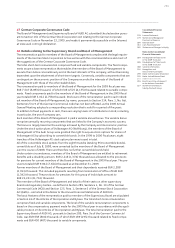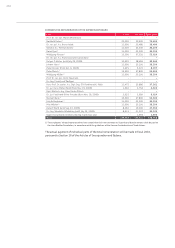Audi 2009 Annual Report Download - page 227
Download and view the complete annual report
Please find page 227 of the 2009 Audi annual report below. You can navigate through the pages in the report by either clicking on the pages listed below, or by using the keyword search tool below to find specific information within the annual report.
224
Risks from special mutual funds are generally countered by maintaining a broad mix of prod-
ucts, issuers and regional markets when investing funds, as stipulated in the investment guide-
lines. Where necessitated by the market situation, currency hedges in the form of futures con-
tracts are also used. Such measures are coordinated by AUDI AG in agreement with the Group
Treasury of Volkswagen AG (Wolfsburg) and implemented at operational level by the special
mutual funds’ risk management teams.
Fund price risks are measured within the Audi Group in accordance with IFRS 7 using sensitivity
analyses. Hypothetical changes to risk variables on the balance sheet date are examined to cal-
culate their impact on the prices of the financial instruments in the funds. Market prices and
indices are particularly relevant risk variables in the case of fund price risks.
Commodity price risks
Commodities are subject to the risk of fluctuating prices given the volatile nature of the com-
modity markets. Commodity futures are used to limit these risks. The hedging measures are
coordinated regularly between AUDI AG and Volkswagen AG (Wolfsburg), in accordance with the
existing Volkswagen organizational guideline. The hedging transactions are performed centrally
for AUDI AG by Volkswagen AG on the basis of an agency agreement. The results from hedging
contracts are credited or debited to the Audi Group on the basis of the proportionate share of
the Volkswagen Group’s overall hedging volume.
Hedging measures relate principally to significant quantities of the commodities aluminum and
copper. Contracts are concluded exclusively with first-rate national and international banks
whose creditworthiness is regularly examined by leading rating agencies.
Commodity price risks are also calculated using sensitivity analyses. Hypothetical changes in
listed prices are used to quantify the impact of changes in value of the hedging transactions on
equity and on profit before tax.
Interest rate risks
Interest rate risks stem from changes in market rates, above all for medium and long-term
variable-rate assets and liabilities.
The Audi Group limits interest rate risks particularly with regard to the granting of loans and
credit, by agreeing fixed interest rates.
The risks associated with changing interest rates are presented in accordance with IFRS 7 using
sensitivity analyses. These involve presenting the effects of hypothetical changes in market
interest rates at the balance sheet date on interest payments, interest income and expenses,
and, where applicable, equity.
Residual value risks
The financial crisis had a negative impact on the used car market in 2009. This is a development
that could continue in the coming years. Where losses are incurred as a result of lower residual
values in conjunction with buy-back obligations from lease agreements, these are partially as-
sumed by the Audi Group on the basis of hedging arrangements. The hedging arrangements are
based on residual value recommendations, as adopted on a half-yearly basis by the residual
value committee at the time of the contract being concluded, and then on current dealer pur-
chase values on the market at the time of the residual value hedging being settled. The residual
value recommendations are based on the forecasts provided by various independent institutions
using transaction prices.
Residual value risks are also calculated using sensitivity analyses. Hypothetical changes in the
market prices of used cars at the balance sheet date are used to quantify the impact on profit
before tax.


